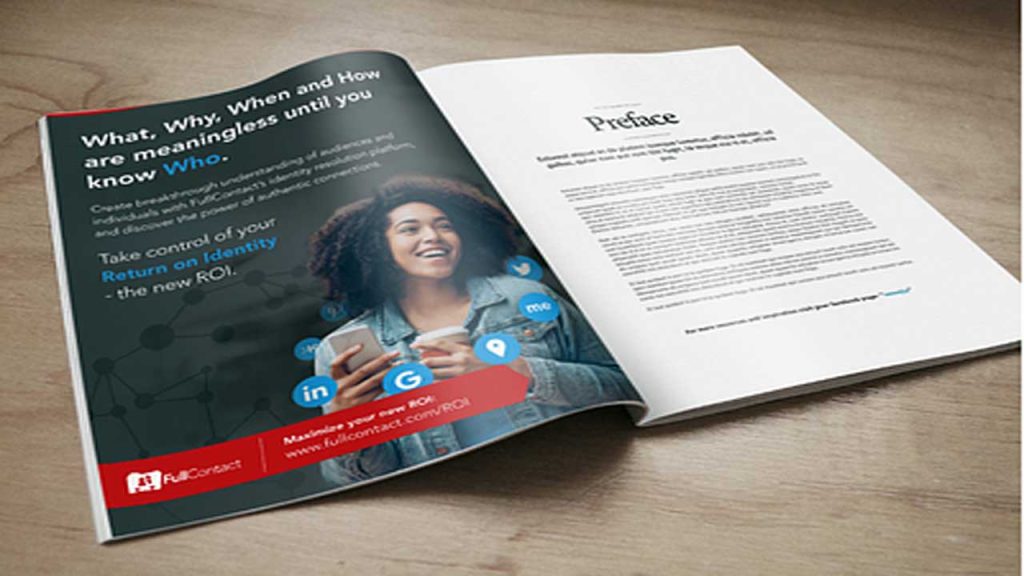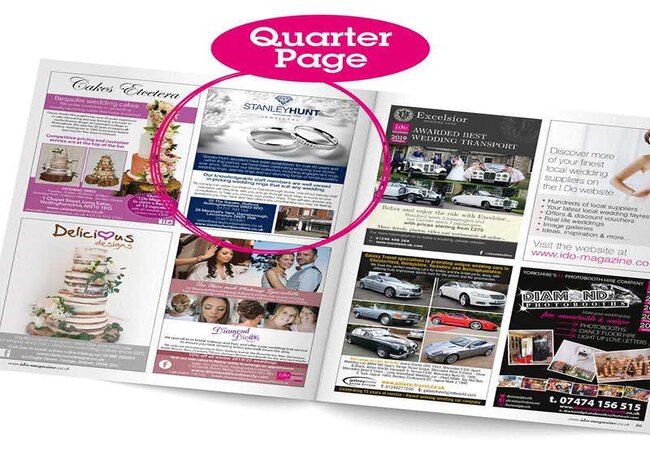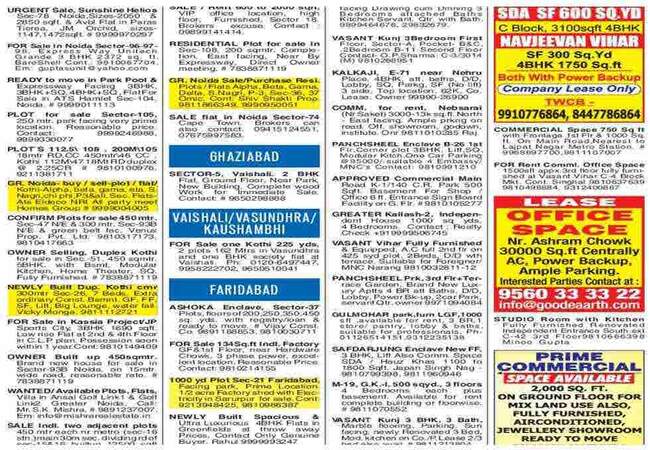Exploring the Different Types of Magazine Ads

The new marketing landscape includes many means to ensure that the targeted audience is reached. Among these methods is magazine advertising, which has been utilised as a powerful means by brands to achieve targeted audiences. However, magazines use diverse types of ads. Thus, marketers need to understand the various ad types, their purposes, functions, and real-world applications. This guide will explore each ad type, enabling businesses to employ whatever knowledge they obtain to improve their advertising strategies.
Overview of Different Forms of Magazine Advertisements
Magazine marketing is a tremendous method through which companies can convey their messages. The form of advertisement will determine all the differences in visibility and interaction between the brands and the target market. In that respect, there are a few things to look out for:
- Multi-Formats: From full-page spreads to classified lists, magazine ads provide each business’s unique marketing needs.
- Reaching the Target Possibility Audience: Different ad types can target different demographics, so marketers have to know their possibilities.
- Resource Budget: Knowing which ad type will benefit them in what way allows decision-makers to budget their resources wisely.
Why the Knowledge of Various Kinds of Magazine Ads Is Important

Knowing various kinds of magazine ads empowers marketers and business leaders to create efficient advertisement strategies. The following is why knowledge in this regard is essential:
- Sophisticated Strategy: There are full-page and partial ad types for branding and lead generation, among other marketing goals. Depending on their preferences and consumption behaviour, ads can interest their consumers.
- A knowledgeable selection of an appropriate ad can deploy resources more efficiently and increase the return on investment.
Types of Magazine Ads: Purpose, Role, and Application
1. Full-Page Advertisements

- Definition and Objective:
Full-page ads take the whole page of a magazine, meaning maximum visualisation. Since they are done strategically, one gets caught immediately to attract the reader’s attention through bold imagery, great headlines, and tremendous content. Due to their size, they help brands convey detailed information to convey a powerful message. - The most effective way these ads can successfully deliver comprehensive messages or brand stories to target audiences. These can be used to unveil a new product, announce an event of great importance, or launch a marketing campaign. The expansive space allowed for creative freedom, enabling brands to articulate their narratives using vivid visuals and engaging texts.
- Real-World Application:
A luxury car manufacturer with its latest model can run an open-page advertisement in a glossy lifestyle magazine. The two-pager, by way of analogy, would be equivalent to using glamorous pictures of the car in scenic locales, paired with compelling copy centred on excellent technology and performance, to reach affluent consumers with the message to help them become brand lovers.
2. Half Page Ads

- What is a half-page ad? What is its purpose?
Half-page advertisements take up half the magazine’s page; therefore, there is a balance between visibility and costs. This is the right size for an ad to say whatever needs to be told without putting too much strain on the reader’s eye or budget. - Purpose:
Advertisements are meant to convey particular messages fairly succinctly. These may include promotions, special events, or product launches. Because of goals, this means that this advertisement can offer flexibility. - Practical Application:
A fashion retailer may use half-page advertising within a lifestyle magazine to feature its seasonal collection. The advertisement may be highly graphic, exhibiting the prevailing trends and a special discount valid only for a certain period of time. Such a form is markedly effective for catching the attention of the audience and putting them immediately into consumer action, such as visiting a store or shopping.
3. Quarter-Page Ads

- Definition and Purpose:
Quarter-page ads take up only a small section of the magazine page, making them cheaper yet effective in communicating your message. They are also short, but they catch the reader’s attention. - Application:
Local businesses can use quarter-page ads to promote something or an event. They serve with the delivery of the message in due time, thus ideal for time-to-time offers or announcements about events happening in the community. - Realistic Usage:
A tiny coffee shop would place a quarter-page ad for its latest seasonal latte in the community magazine. The ad can appeal to the aesthetics of the drink by publishing some very attractive images and might have a great tagline; if the shop offers a discount, that should also go up. That is how a business engages its community through advertising while driving foot traffic into the shop.
4. Advertorials

- Definition and Purpose:
Advertorials are specially created ads written in the style of an editorial to blend informative content with merely promotional content. This format enables brands to reach readers more meaningfully by incorporating value while subtly marketing their products or services. - Usage:
Advertorials are primarily used to inform and engage readers through a blend of informative content and promotion. Therefore, in their narrative form, a brand can build trust and credibility about what it’s offering. - Real-Life Use Case:
A skincare company would publish an advertorial in a health and wellness magazine discussing the benefits of using organic skincare products. The article would cover topics like organic natural skin care regimes but without overtly focusing on them and using the names of the company’s products within the text. Thus, it would educate the readers and gently push them towards considering the brand for their skin care needs.
5. Sponsored Content

What Is It?
It is sometimes called paid or branded content and must be labelled.
Sponsored content is a valuable information source or storytelling subtly intertwined with a brand message. Unlike traditional ads, this format focuses on the relevance and engagement value of the material presented to the reader.
- Function:
Sponsored content aligns readers’ interests with relevant topics while advancing the product or service being pushed. It gives brands the chance to be thought leaders and to create an aura of truthfulness. - Real-World Application:
For example, a financial services company can establish content under the category “Smart Investing Tips for Millennials,” which gives the reader a practical finance tip while subtly tucking the services inside the article. This way, the brand is more effective in connecting to a much younger crowd, building credibility, and urging the readers to follow through on their offerings.
6. Classified Ads

- Definition and Purpose:
Classified ads are text-based small adverts grouped into categories such as jobs, real estate, or personal services. Compared to other means of advertising, classified ads are relatively cheap and provide businesses and individuals with an easy way to reach targeted customers. - Purpose:
The basic function of classified ads is to connect buyers with sellers through brief information. Most of the adverts contain grouped contact data as well as short descriptions that enable the interested party to reach the adverts. - A small business can advertise a classified ad in a community magazine to list job openings and even briefly describe the position. The company can also list its contact information. This simple method makes it easier for businesses to reach their community and attract potential applicants.
7. Back Page Ads
- Definition and Purpose:
Back-page ads are placed on the rear page of the magazine, marked with high visibility and prominence. They are mostly used for high-budget campaigns and premium brands to ensure maximum visibility of the ad. - Purpose:
They are meant to catch the eye of the reader, as they are placed at the highest place. They are often used in brand launching campaigns, especially in special promotions or the release of significant announcements with which to leave a long-term impact. - Real World Example:
A blockbuster movie release can be advertised on the back page of an entertainment magazine, creating suspense among its spectators for when it will hit the theatres. The ad can include very dramatic scenes from the movie, a short, enticing slogan, and an invitation to readers to go watch it. This kind of ad receives maximum exposure and is sure to be remembered by potential viewers.
History of Magazines Used in Advertising

This is an aspect that business people also need to focus on.
- Engagement by Ad Type
- There are different types of ads which are suited to different demos and interests.
- Knowledge about various types of ads helps brands to ensure that their communication is targeted correctly.
- Branding Position
- Ads in magazines help develop images for brands.
- Differing levels of engagement across the various ad types influence consumer perception.
- Cost Effective
- Knowledge about ad types will help develop an efficient budget.
- Proper choice of ad type leads to better returns on investment.
- Creative Ideas
- Every ad type provides different opportunities to be creative.
- Engaging visuals helps to create brand recall and persuasion.
- Ability to Track and Measure
- There are various kinds of advertisements with numerous tracking options.
- Measuring engagement aids in guiding future advertising directions.
- Long-Term Success in Consumer Relationships
- Advertising in magazines holds more credibility than internet ads.
- Success in the type of ad used leads to long-term relationships with consumers.
Final Thoughts
Understanding types of magazine ads and their configuration translates to the appropriate usage of the configurations to aid in business growth. Summary of main points covered:
- Reach and Engagement: The choice of ad type can better relate to the target population, thereby boosting engagement.
- Brand Positioning: All forms of advertising work toward building a brand image in the consumer’s mind.
- Cost Efficiency: Different types of ads have cost implications. The budget can only be optimal. Making appropriate choices can only optimize the budget. Unique kinds of ads allow the value proposition to be communicated uniquely.
- Tracking/Measurement: Understood ad types can be used to aid in determining strategies’ effectiveness.
- Long-Term Consumer Relationships: Magazine ads that work build credibility and induce customer loyalty over the long term.
Conclusion
Understanding the distinct forms of magazine adverts is necessary for a business to maximise the potential of unutilised print media. Once the appropriate advert type has been selected, the marketing objectives will be achieved, the business’s advantage will stand out in a highly competitive marketplace, and growth will ensue.
